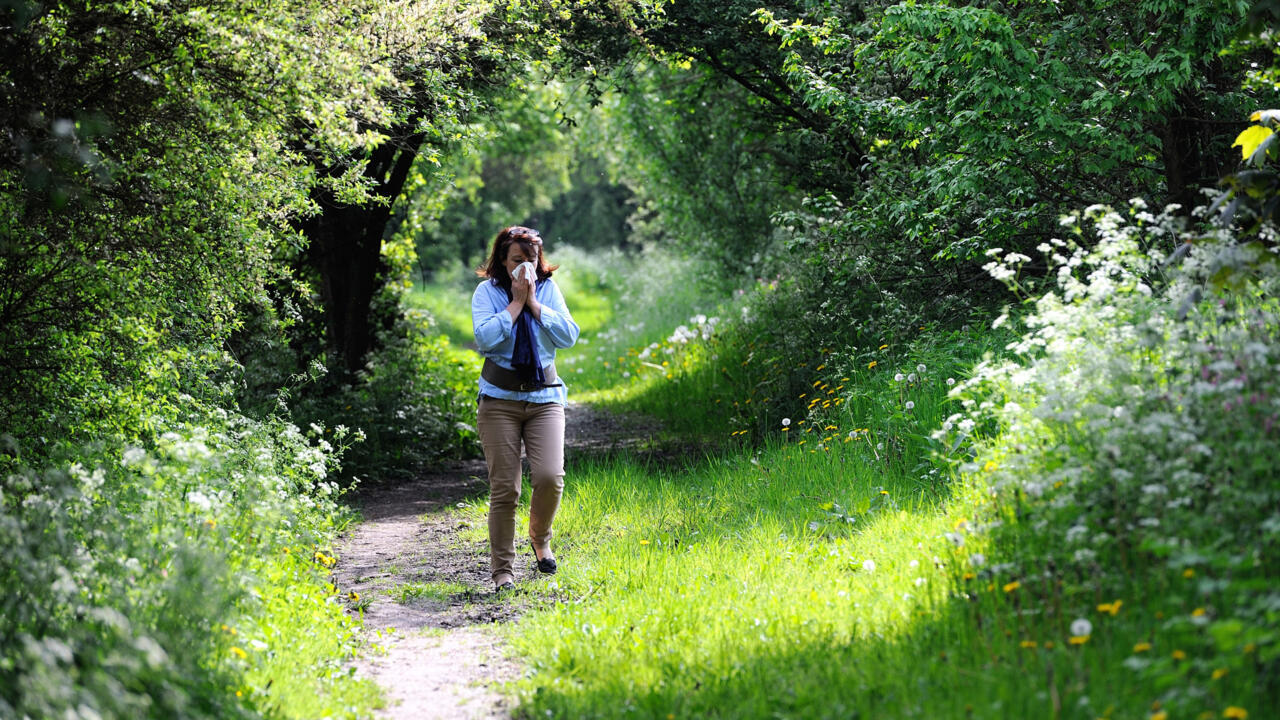
Climate change has caused seasonal shifts worldwide. Warmer temperatures now arrive earlier each year. This early onset affects plant life. Trees begin releasing pollen sooner. Flowering phases extend into late fall. Spring pollen seasons now last longer than before. For allergy sufferers, symptoms persist for weeks. Ragweed and birch pollen remain active deep into autumn. Short winters no longer suppress plant cycles.
Higher carbon dioxide levels stimulate plants to produce more airborne allergens
CO₂ concentrations have increased steadily. Plants absorb carbon dioxide for growth. With more CO₂, plants grow larger and faster. This includes allergenic species like ragweed. They release more pollen per plant than in the past. Higher output means higher allergen concentration in the air. Sensitive individuals react more intensely. Pollen grains also become more potent. Their protein structures shift with atmospheric change.
Ragweed thrives in urban heat zones and releases pollen for extended periods
Urban centers trap heat. This creates localized warming known as urban heat islands. Ragweed adapts well to such environments. It grows aggressively near roads and empty lots. City air contains high CO₂ levels. Combined with heat, this boosts ragweed output. It produces more pollen over a longer cycle. City dwellers experience worsening symptoms. Air pollution also interacts with these allergens.
Air pollution can alter pollen structure and increase allergenic potential
Pollutants like ozone and diesel particles affect pollen integrity. These pollutants bind with airborne grains. This fusion changes how pollen interacts with the immune system. Modified pollen triggers stronger reactions. Some particles carry allergens deeper into the lungs. Symptoms intensify. Even low pollen counts may cause discomfort. Polluted air thus amplifies seasonal effects.
Changes in rainfall and humidity modify how pollen spreads and settles in the air
Climate change alters precipitation patterns. Some regions now face prolonged droughts. Others experience excessive rainfall. Dry weather increases airborne pollen levels. Lack of rain means no natural washout. Pollen remains suspended longer. Wind disperses it across greater distances. Humidity also plays a role. Moist conditions clump particles together. But sudden dry periods can lift them back.
Allergy seasons now start earlier and end later due to global climate instability
Historical allergy timelines are no longer accurate. Many regions report early symptom onset. Winter thaws occur in January. Tree pollination may begin by February. Late-blooming species now persist into November. These shifts compress recovery periods. Individuals with multiple sensitivities suffer longer. Annual allergy calendars must be updated frequently. Clinics adapt treatment schedules accordingly.
Mold spores increase during floods and high humidity, adding to airborne allergen burden
Mold growth thrives in moisture. Climate-related flooding supports fungal expansion. Basements, soil, and walls become reservoirs. Spores release into the air with ease. They spread rapidly in damp climates. Respiratory issues multiply in flooded areas. Allergy patients report dual reactions. Mold adds complexity to seasonal triggers. Even dried-out homes release residual spores.
Tree pollen levels have risen significantly in both spring and fall seasons
Climate data reveals shifting pollen loads. Trees release more allergens under stress. Warming triggers earlier budding. Late autumn sees secondary pollen waves. Oak, birch, and cedar lead this trend. Air sampling stations confirm higher annual averages. Breathing discomfort continues through normally dormant months. Extended tree cycles contribute to chronic allergic inflammation.
Wildfire smoke intensifies symptoms by weakening respiratory defenses
Climate change increases wildfire frequency. Smoke particles irritate airways directly. They also compromise immune barriers. This weakens the body’s ability to filter allergens. Combined exposure to smoke and pollen worsens reactions. People report tightness, coughing, and wheezing. Asthmatic individuals face particular risks. Wildfire seasons now overlap with allergy cycles.
Ice melt and sea-level rise influence inland allergen distribution through wind patterns
Melting ice alters global wind systems. These shifts change allergen travel routes. Coastal winds pull marine particles inland. Rising seas displace vegetation. Airborne allergens migrate to new regions. Communities without previous exposure now face pollen waves. Allergy maps expand as climates blend. Some plants grow in newly habitable zones.
Insects and plants move into new territories, bringing unfamiliar allergens to populations
Warming expands insect and plant habitats. Regions once too cold now support tropical species. New pollinators appear in northern areas. Plants follow their path. With them come unfamiliar allergens. Immune systems react to novel exposures. Diagnoses increase in previously unaffected zones. These migrations complicate treatment protocols.
Allergy medication demand rises as longer seasons strain symptom management
Longer allergy periods require extended medication use. Patients rely on antihistamines for more months. Nasal sprays and inhalers run out faster. Side effects build over time. Drug tolerance may increase. Physicians adjust prescriptions frequently. New combinations become necessary. Healthcare systems face rising demand for relief options.
Climate-influenced allergies disproportionately affect low-income and urban communities
Urban neighborhoods face higher allergen burdens. Pollution levels remain high in crowded cities. Green spaces often lack maintenance. Ragweed dominates neglected lots. Healthcare access may be limited. Residents struggle with unmanaged symptoms. Climate effects amplify social disparities. Vulnerable populations endure longer suffering. Focused intervention becomes necessary.
Climate data tracking reveals correlations between temperature spikes and allergy clinic visits
Researchers link climate spikes to medical trends. Temperature anomalies precede hospital admissions. Clinics report increased allergy visits during heatwaves. Data maps show parallel curves. Allergy rates rise with heat records. Seasonal forecasts now factor in climate models. Healthcare planning aligns with weather predictions. Public alerts follow pollen projections.
Children are especially vulnerable to longer exposure windows and novel allergen combinations
Developing immune systems react more strongly. Children breathe more allergens per body weight. They spend more time outdoors. School seasons overlap with peak pollen days. Pediatric symptoms often go undiagnosed. Sleep, focus, and growth may suffer. Allergy training for educators becomes vital. Early intervention reduces complications.
Longer seasons disrupt traditional immunotherapy timelines and dose planning
Allergy shots follow specific schedules. These are based on allergen seasons. Climate change disrupts those timelines. Early exposure confuses dosing phases. Maintenance becomes harder to time. New treatment windows must adapt. Immunologists revise protocols yearly. Flexibility becomes essential. Patients require ongoing evaluation.
Indoor allergens worsen with increased air conditioning and sealed building designs
Hotter climates increase air conditioning use. Sealed buildings trap indoor allergens. Dust mites and mold multiply. Ventilation becomes insufficient. Stale air circulates irritants. Pollen enters through ducts. Filters clog quickly. Regular cleaning becomes more important. HVAC systems must be maintained well. Poor air quality now exists indoors.
Cross-reactivity rises as global pollen types spread and immune systems encounter hybrids
Global travel and climate migration mix plant species. Cross-reactivity becomes common. One pollen resembles another. Immune systems confuse them. Symptoms spread across seasons. Diagnosis becomes harder. Blood tests reveal multiple triggers. Specialists track cross-species similarities. Allergy treatment must account for overlap.
Regional health systems adjust public warnings based on changing allergen behavior
Pollen forecasts evolve with climate trends. Apps and alerts issue daily counts. Health agencies expand monitoring tools. Local warnings adjust for sudden blooms. Some cities issue air quality alerts tied to allergen spikes. Public education campaigns grow. Patients rely on real-time updates.
